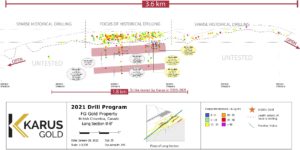
April 6, 2022
Vancouver, BC, April 6, 2022 – Karus Gold Corp (“Karus Gold” or the “Company”) announces additional high-grade gold drill results from its 2021 drill program, including 17.87 meters (“m”) of 2.23 grams per tonne (“g/t”) gold within a broader interval of 59.35 m of 1.13 g/t gold. These results further confirm the presence of high-grade gold corridors below historical drilling at the FG Gold Project (“Project” or “FG Gold”), part of the Company’s 1,000 square kilometer (“km”) South Cariboo Gold District in British Columbia (Figure 1).
Highlights
- FG-21-400 confirms the continuity of Corridor 1 gold mineralization for 25 m along strike to the SE from FG-20-382 and FG-20-383, remaining open at along strike to the SE:
-
- 17.65m of 0.74 g/t gold at 173.5 m downhole, including 4.65 m of 2.06 g/t gold
- 59.35 m of 1.13 g/t gold at 212.4 m downhole, including 17.87 m of 2.3 g/t gold
- FG-21-395 confirms continuation of Corridor 3 50 m along strike from FG-20-382 and FG-20-383, remaining open at along strike to the SE:
- 4 m of 0.84 g/t gold at 209.1 m downhole, including 7.9 m of 2.81 g/t gold
- Tightly spaced drilling tracing Corridor 1 to the SE confirms the strength of the lateral, F2 fold axis trend on mineralized zones.
- Project remains underexplored along a >20-km trend, providing many opportunities to expand the footprint of gold mineralization and for new discoveries on-strike and downdip.
Karus Gold’s Vice President of Exploration, Michael Tucker, comments, “The FG-21-400 results are a further validation of the structural orientation of the gold-bearing zones. We are continuing to see where the primary controls of the mineralized zones trend and it is encouraging to see such a prominent structural trend controlling the orientation of the higher-grade gold plunge lines. This strong, strike continuity of Corridor 1 will guide the 2022 drill program that will include 50 m spaced step-outs along strike and 2 5 m pierce points on section to delineate the dimensions of gold mineralization.”
Exploration Program Details
Nineteen large diameter (HQ) oriented core drill holes for a total of 7,142 m were completed between July and September, 2021 (Figure 2). The drill program was designed to demonstrate continuity of gold mineralization within vein corridors through 25 and 50 m spaced drill holes along trend. The program targeted the continuation of known gold-mineralized [orogenic] quartz veins further down dip and along strike within prospective and un-tested regions of the targeted [phyllite] host rock.
Assays from holes FG-21-392, FG-21-395, FG-21-397, FG-21-400 and FG-21-403 are reported in this news release. Assays for the remaining nine holes of the 2021 drill program will be released as they are received. A plan map of the drill collars and traces is included in Figure 2, including the location of the cross sections in Figures 3 and 4.
Detailed Discussion of Results
Figure 3 illustrates the results from holes FG-21-400 and FG-21-403. These holes are drilled as a 25 m step out to the southeast from the strong results in holes FG-20-382 and FG-20-383 (refer to June 9, 2021 press release). FG-21-400 intersected the core of the mineralized plunge line to the SE along the strike of the F2 fold axis. The holes are designed to target above and below the core of the zone as it trends to the SE however, only hole FG-21-400 intersected the bulk of the zone. This indicates that Corridor 1 has room to be intersected ~25 meters up-dip from FG-21-400 as well as ~25 meters down-dip from FG-21-400.
Figure 4 illustrates the results from holes FG-21-392, FG-21-395 and FG-21-397. These holes are drilled as a 50 m step out to the southeast from the strong results in holes FG-20-382 and FG-20-383. Of the holes on this section, FG-21-395 was closest to intersecting the core of Corridor 1 however, based on the results from FG-21-400 and FG-21-403, the core of the zone likely sits between holes FG-21-392 and FG-21-395.
The information gathered from these two sections is important in delineating the size and trend of Corridor 1. From the results, it appears that the width of Corridor 1 is ~50 meters. It also appears as though there is a much greater strike continuity to the zone than there is dip continuity, highlighting the importance of the F2 fold axis-controlled plunge line. Based on the 2021 results, Corridor 1 strikes a minimum of 200 meters between intersections of FG-21-395 and FG-20-385 with a probable 550 meter extension of Corridor 1 based on the intersection of FG-20-378 to the northwest (Figure 5). This strong, strike continuity of Corridor 1 will guide the 2022 drill program that will include 50 meter spaced step-outs along strike and 2 5 meters pierce points on section to delineate the dimensions of gold mineralization.
Table of Significant Drill Results
| Hole ID | Zone | From (m) | To (m) | Length (m) | Grade (gpt) |
| FG-21-392 | Corridor 1 | 174 | 234.7 | 60.7 | 0.43 |
| inc. | 174 | 183.9 | 9.9 | 0.68 | |
| inc. | 193 | 198.2 | 5.2 | 1.94 | |
| FG-21-395 | Corridor 1 | 209.1 | 247.5 | 38.4 | 0.84 |
| inc. | 229.5 | 237.4 | 7.9 | 2.81 | |
| FG-21-397 | Corridor 1 | 178.28 | 182.55 | 4.27 | 1.33 |
| FG-21-397 | 195 | 201.65 | 6.65 | 0.6 | |
| FG-21-397 | 218.17 | 243.19 | 25.02 | 1.14 | |
| inc. | 230.16 | 237.31 | 7.15 | 2.88 | |
| FG-21-397 | 255.9 | 271.38 | 15.48 | 0.68 | |
| FG-21-400 | Corridor 1 | 173.5 | 191.15 | 17.65 | 0.74 |
| inc. | 186.5 | 191.15 | 4.65 | 2.06 | |
| FG-21-400 | 212.4 | 271.75 | 59.35 | 1.13 | |
| inc. | 221.63 | 239.5 | 17.87 | 2.23 | |
| FG-21-403 | Corridor 1 | 207 | 210.35 | 3.35 | 1.66 |
| FG-21-403 | 219.95 | 231.15 | 11.2 | 0.45 | |
| FG-21-403 | 248.5 | 255.9 | 7.4 | 0.93 | |
| FG-21-403 | 284.3 | 287 | 2.7 | 1.37 |
- Karus Gold has not been able to determine true width yet due to complexity of the vein structures within the mineralized zones. The 2020 drill program was designed to better understand the geometry and how the mineralized zones are related. The orientation of individual quartz veins within the mineralized zones are quite variable. Reported widths are drill indicated core length and not true width, for the reasons above. Average grades are calculated with un-capped gold assays, as insufficient drilling has been completed to determine capping levels for higher grade gold intercepts.
- Drilling data on the Lower Zone is currently limited and the true thickness and orientation of the zone is not firmly known. However, based on current data, it is estimated that intercept represents ~50%-75% of the true thickness of the zone.
- Composites are calculated using a 0.3 g/t Au cutoff, incorporating no more than 7 m downhole dilution. Higher grade composite sections are calculated using a 1 g/t and 3g/t cutoff incorporating no more than 5 m downhole dilution. Screen metallic assay data is utilized preferentially over standard fire assay analysis where available as it is more representative of the true sample value due to the increased sample volume processed and the multiple gold size fractions analyzed.
- The interval reported for FG-21-401 includes one over limit assay that is yet to be received as of the date of the press release. A gravimetric gold analysis was automatically triggered for a Fire Assay analysis above 10 g/t gold. The reported interval uses 10 g/t gold for the assay interval, which will be updated once received.
Next steps
Assays from the 2021 FG drill program and district area program are being processed and we expect to begin reporting assay through Q1 2021. Based on these results, Karus Gold will begin preparing for a 2022 exploration program that will be directed toward expanding the high-grade gold vein corridors at FG Gold which remain open along strike and at depth.
Regional Geology
The FG Gold property straddles the boundary between the Omineca and Intermontane tectonic belts of the Canadian Cordillera. The eastward emplacement of the Intermontane Belt onto the Omineca Belt along the Eureka Thrust Fault caused widespread regional metamorphism and structural deformation of both Belts. The regional scale, northwest trending, shallowly plunging, Eureka Syncline is one of the dominant resulting structures in the project area. Rocks in the core of the Eureka Syncline are comprised of basalt, augite porphyry flows, tuffs and volcanic breccias at dominantly lower greenschist metamorphic grade; they are structurally emplaced onto metavolcanic and sedimentary rocks of the Quesnel Terrane. The Quesnel Terrane is recognized for its prevalence of copper, gold and molybdenum mines and showings such as those at Highland Valley, Boss Mountain, QR and Mount Polley.
Property Geology
The FG Gold Project consists of 35 claims, totaling 13,008 hectares, in the eastern Cariboo region of central British Columbia is located ~100 km east of Williams Lake, British Columbia. Rocks that host FG Gold are predominantly black (“knotted”) phyllites of the Middle Triassic Slocan Group (Quesnel Terrane). These rocks, together with the Upper Triassic Nicola Group, form the northeast limb of the northwest-trending Eureka Syncline, which is situated southwest of the Eureka thrust fault; this fault represents the suture between sedimentary and volcanic rocks of the Middle-Upper Triassic Quesnel Terrane and Devonian and older rocks of ancestral North America. Gold mineralization at FG Gold is contained in a quartz-carbonate-gold vein system and considered to be a sediment-hosted orogenic gold deposit. Typical of these types of deposits, mineralization occurs as native gold within highly deformed quartz-Fe carbonate veins that contain locally abundant pyrite and pyrrhotite. Gold bearing veins are heavily modified by a minimum of two phases of post-emplacement deformation which imposes a strong control on the orientation of the gold bearing vein corridors.
FG Gold is part of Karus Gold’s 1,000 km2 South Cariboo Gold District which hosts 110 km of the Eureka thrust structural trend (“Trend”) that drives gold mineralization in the District. The Trend is highly prospective for orogenic gold deposits, some of largest in the world, and includes the Company’s Gold Creek Project. The Cariboo region is accessible with local power, well developed road network and skilled local labour from multiple current and past operating mines.
More information is available with respect to the FG Gold Project on the NI 43-101 technical report dated November 26, 2021 “Technical Report on the South Cariboo Gold Property” filed under Karus Gold’s Profile on SEDAR at www.sedar.com and on Karus Gold’s website at www.karusgold.com.
Collar Table
| Hole | Length | Azimuth | Dip | Easting | Northing | Elevation |
| FG-21-392 | 331 | 45.23 | -54.03 | 665471 | 5797104 | 1610 |
| FG-21-395 | 354 | 43.13 | -65.2 | 665471 | 5797104 | 1610 |
| FG-21-397 | 353 | 43.29 | -62.33 | 665471 | 5797104 | 1610 |
| FG-21-400 | 333 | 48.71 | -59.92 | 665450 | 5797126 | 1609 |
| FG-21-403 | 309 | 40.73 | -70.16 | 665450 | 5797126 | 1609 |
QA/QC and Qualified Person
Once the drill core was received from the drill site, individual samples were determined, logged for geological attributes, sawn in half, labelled, and bagged for assay submittal. The remaining drill core was then stored at a secure site in Horsefly, BC. The Company inserted quality control samples at regular intervals within the sample stream which included blanks, preparation duplicates, and standard reference materials with all sample shipments intended to monitor laboratory performance. Sample shipment was conducted under a chain of custody procedure.
Drill core samples were submitted to Bureau Veritas’ analytical facility in Vancouver, BC for preparation and analysis. Sample preparation included drying and weighing the samples, crushing the entire sample, and pulverizing 250 grams. Analysis for gold was by method FA450: 50g fire assay fusion with atomic absorption (AAS) finish with a lower limit of 0.005 ppm and upper limit of 10 ppm. Gold assays greater than 10ppm are automatically analysed by method FA550: 50g fire assay fusion with a gravimetric fusion.
Bureau Veritas is accredited to the ISO/IEC 17025 standard for gold assays, and all analytical methods include quality control materials at set frequencies with established data acceptance criteria. Parameters for Bureau Veritas’ internal and Karus Gold’s external blind quality control samples were acceptable for the analyses returned.
Technical information with respect to FG Gold contained in this news release has been reviewed and approved by Andrew Kaip, P.Geo., who is Karus Gold’s CEO and is a qualified person under National Instrument 43-101 responsible for the technical matters of this news release.
Corporate Update
The Company announces that Anil Jiwani, CPA, CA will assume the CFO role effective May 1, 2022. The Board would like to thank out-going CFO, Jessica Van Den Akker, for her dedicated service.
The Company also announces that it completed a debt settlement agreement (the “Debt Settlement Agreement”) with 1081646 BC Ltd. (the “Creditor”) with respect to the sum of $52,500 (the “Debt”) for accrued management services fees through the issuance to the Creditor of 149,999 shares and 47,727 warrants of the Company for a value of $52,500, where each warrant entitles the holder to acquire one additional common share for a period of 24 months at a price of $0.85 per common share. The common shares issued include the same anti-dilution provision as outlined in the December 2021 Offering Memorandum (refer to December 28, 2021 press release).
As previously disclosed in the September 23, 2021 news release, Karus Gold continues to work with the TSXV to complete the listing process.
About Karus Gold
Karus Gold is 100% owner of the 1,000 km2 South Caribou Gold District that includes the drill-stage FG Gold and Gold Creek projects in British Columbia. Karus Gold is supported by strategic investor Eric Sprott; and insiders, together with the management and Board, own approximately 59% of the basic shares outstanding.
Further information on Karus Gold and its assets can be found on the Company’s website at www.karusgold.com and at www.sedar.com, or by contacting us as info@karusgold.com or by telephone at (888) 455-7620.
On behalf of Karus Gold
”Andrew Kaip”
Chief Executive Officer
(647) 515-7858
Investor Relations
Giordy Belfiore – Kin Communications
(604) 684-6730
KAR@kincommunications.com
Cautionary Statement Regarding Forward-Looking Information
This news release contains forward-looking statements relating to the future operations of the Company and other statements that are not historical facts. Forward-looking statements are often identified by terms such as “will”, “may”, “should”, “anticipate”, “expects”, “suggests” and similar expressions. All statements other than statements of historical fact, included in this release, including, without limitation, statements regarding the future plans and objectives of the Company are forward-looking statements. Such forward-looking statements, and any assumptions upon which they are based, are made in good faith and reflect our current judgment regarding the direction of our business. Management believes that these assumptions are reasonable. Forward looking information involves known and unknown risks, uncertainties and other factors which may cause the actual results, performance, or achievements of the Company to be materially different from any future results, performance or achievements expressed or implied by the forward-looking information.
Such factors include, among others: risks related to exploration and development activities at the Company’s projects, and factors relating to whether or not mineralization extraction will be commercially viable; risks related to the hazards and risks normally encountered in the exploration of minerals, such as unusual and unexpected geological formations; uncertainties regarding regulatory matters, including obtaining permits and complying with laws and regulations governing exploration, development, production, taxes, labour standards, occupational health, waste disposal, toxic substances, land use, environmental protection, site safety and other matters, and the potential for existing laws and regulations to be amended or more stringently implemented by the relevant authorities; risks related to title to the Company’s properties, including the risk that the Company’s title may be challenged or impugned by third parties; the ability of the Company to access necessary resources, including mining equipment and crews, on a timely basis and at reasonable cost; competition within the mining industry for the discovery and acquisition of properties from other mining companies, many of which have greater financial, technical and other resources than the Company, for, among other things, the acquisition of mineral claims, leases and other mineral interests as well as for the recruitment and retention of qualified employees and other personnel; access to suitable infrastructure, such as roads, energy and water supplies in the vicinity of the Company’s properties; and risks related to the stage of the Company’s development, including risks relating to limited financial resources, limited availability of additional financing and potential dilution to existing shareholders; reliance on its management and key personnel; inability to obtain adequate or any insurance; exposure to litigation or similar claims; currently unprofitable operations; risks regarding the ability of the Company and its management to manage growth; and potential conflicts of interest.
Forward-looking statements contained herein are made as of the date of this news release and the Company disclaims any obligation to update any forward-looking statements, whether as a result of new information, future events, or results, except as may be required by applicable securities laws. There can be no assurance that forward-looking information will prove to be accurate, as actual results and future events could differ materially from those anticipated in such statements. Accordingly, readers should not place undue reliance on forward-looking information.
Figure 1. Location of the 1,000 square km South Cariboo Gold District 1,000 square km South Cariboo Gold District
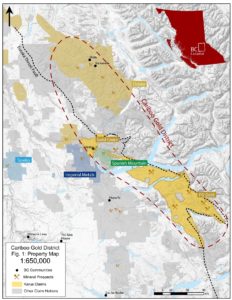
Figure 2. Location of FG Gold Diamond Drill Holes and Section Lines
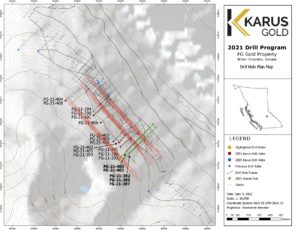
Figure 3. Cross Section A to A’ showing FG-21-400 and FG-21-403 (View to Northwest)
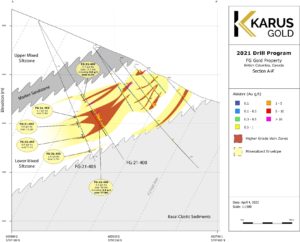
Figure 4. Cross Section B to B’ showing FG-21-392, FG-21-395 and FG-21-397 (View to Northwest)
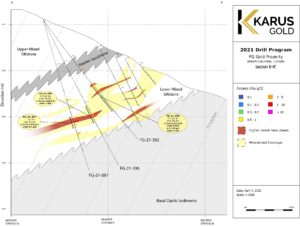
Figure 5. Long section highlighting pierce points of released holes
